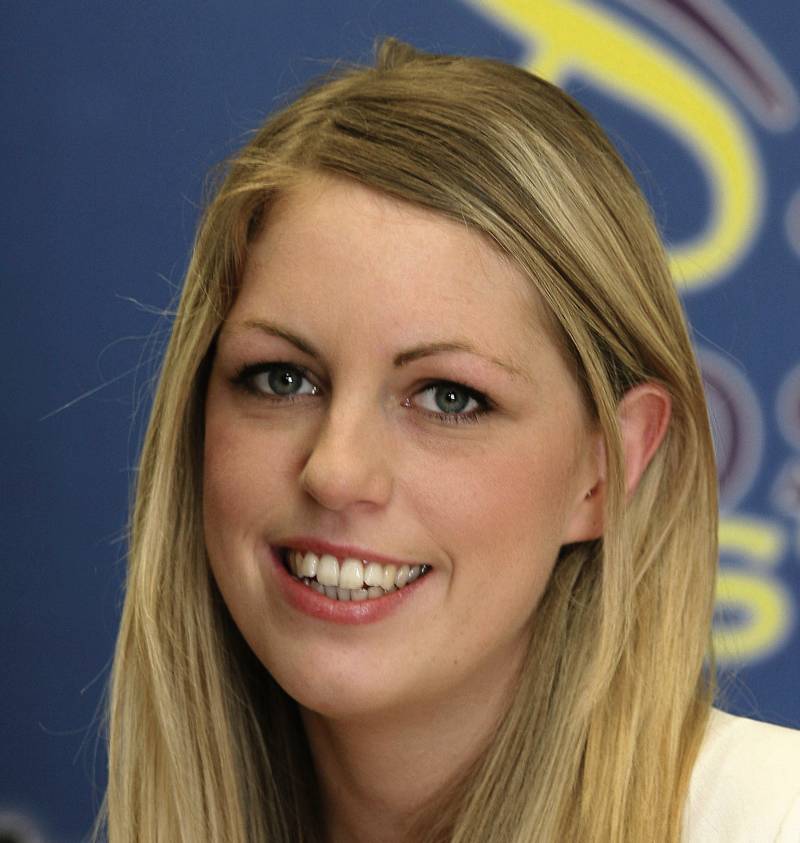CITY TRIBUNE
‘Sexting’ workshops to be rolled out in Galway schools

Condemning ‘sexting’ as bad behaviour will do nothing to thwart its popularity among young people – and may even harm them, according to a researcher rolling out workshops across Galway schools.
Sexting has become a real phenomenon among school children.
A study of more than 3,000 students in 30 schools earlier this year found that that 45% of sixth-year students have sent a suggestive message while 34% have sent a sext – defined as the sharing of sexual text, video, and photographic content or nudes using phones, apps and social networks.
The likelihood of sending or receiving nude pictures increases with every year of secondary school. The same study carried out by Zeeko found that 4% of first-year students have sent a sext to a non-partner whereas 34% of sixth-year students had reported doing the same.
Haley Mulligan, an education facilitator with the West Ireland Sex Education Resource (WISER) team in AIDS West, insists that sexting and nudes “is in many ways the epicentre of the sexual online digital world of young people”.
For many youths it is the modern-day flirting.
“When you think Kim Kardashian is a hero to many young people and she originally became famous for a sex tape. The whole industry of sex is internet based.
“The idea that the modern teen will explore their sexuality through the digital realm seems completely and utterly logical, although this very idea may fill parents full of dread and fear,” she states.
Many teens send the images in an act of bravado. It gives others a false sense of equality – ‘I’ll show you mine if you show me yours’. They also mistakenly believe promises that the content will never be shared. For others it’s down to poor self-esteem.
Whatever the reasons, Haley says that labelling the practice of sexting and nudes as a ‘deviant’ act that must be stopped will have limited effect on young people, who know the risks yet continue to express themselves through images and words.
“In many ways it is similar to young people talking to strangers online. Children know the risks but still continue to communicate with strangers online – 32% of 1st Year students talked to a stranger online compared to 70% of 6th Years; 8% of 1st Years met strangers physically compared to 38% of 6th Years.
“Clearly young people know the risks, but they are driven by strong physical, psychological and social desires towards sexual expression via nudes and sexting.”
During WISER workshops on sexting and nudes delivered in city and county schools in the past year, Hayley has always been struck by how quickly so many of the students jump to blame the sender of the nude pics – rather than the person who distributed it publicly and those who continued to share it.
“If we continue to assume that ‘stupid’ girls send nudes then not only are we perpetuating the idea that there is something inherently wrong and deviant about women’s sexuality and sexual expression, we are also failing our boys by ignoring the potential harms that can arise from young boys sharing images online,” states Hayley.
Vilifying the sender of sexual images may induce feelings of fear, embarrassment, isolation or shame and demonising the practice may adversely impact how the young person feels about their sexuality or sexual expression.
Instead the emphasis should be on empathy, says the PhD candidate in the NUIG School of Law.
“It’s about flipping it and showing you have compassion with the young person who has made a mistake,” urges Hayley.
“Unless they feel that empathy they won’t come forward in the event of an image being shared on social media. And they really must go to a parent, trusted adult or the Gardaí if that happens and not feel they are alone.”
For girls who have their privacy violated it is the public shaming that can be the most devastating.
“It’s the name calling that hurts. it’s the isolation that hurts. it’s the branding of her a particular ‘type’ of girl that hurts.”
Break ups can lead to private images being shared. In the workshops, facilitators urge young people to delete all provocative images in the event of a relationship split “because it’s the right thing to do”.
■ For details of workshops log onto bewiser.ie.
CITY TRIBUNE
Galway ‘masterplan’ needed to tackle housing and transport crises

From the Galway City Tribune – An impassioned plea for a ‘masterplan’ that would guide Galway City into the future has been made in the Dáil. Galway West TD Catherine Connolly stated this week that there needed to be an all-inclusive approach with “vision and leadership” in order to build a sustainable city.
Deputy Connolly spoke at length at the crisis surrounding traffic and housing in Galway city and said that not all of the blame could be laid at the door of the local authority.
She said that her preference would be the provision of light rail as the main form of public transport, but that this would have to be driven by the government.
“I sat on the local council for 17 years and despaired at all of the solutions going down one road, metaphorically and literally. In 2005 we put Park & Ride into the development plan, but that has not been rolled out. A 2016 transport strategy was outdated at the time and still has not been updated.
“Due to the housing crisis in the city, a task force was set up in 2019. Not a single report or analysis has been published on the cause of the crisis,” added Deputy Connolly.
She then referred to a report from the Land Development Agency (LDA) that identified lands suitable for the provision of housing. But she said that two-thirds of these had significant problems and a large portion was in Merlin Park University Hospital which, she said, would never have housing built on it.
In response, Minister Simon Harris spoke of the continuing job investment in the city and also in higher education, which is his portfolio.
But turning his attention to traffic congestion, he accepted that there were “real issues” when it came to transport, mobility and accessibility around Galway.
“We share the view that we need a Park & Ride facility and I understand there are also Bus Connects plans.
“I also suggest that the City Council reflect on her comments. I am proud to be in a Government that is providing unparalleled levels of investment to local authorities and unparalleled opportunities for local authorities to draw down,” he said.
Then Minister Harris referred to the controversial Galway City Outer Ring Road which he said was “struck down by An Bord Pleanála”, despite a lot of energy having been put into that project.
However, Deputy Connolly picked up on this and pointed out that An Bord Pleanála did not say ‘No’ to the ring road.
“The High Court said ‘No’ to the ring road because An Bord Pleanála acknowledged it failed utterly to consider climate change and our climate change obligations.
“That tells us something about An Bord Pleanála and the management that submitted such a plan.”
In the end, Minister Harris agreed that there needed to be a masterplan for Galway City.
“I suggest it is for the local authority to come up with a vision and then work with the Government to try to fund and implement that.”
CITY TRIBUNE
Official opening of Galway’s new pedestrian and cycle bridge

The new Salmon Weir pedestrian and cycle bridge will be officially opened to the public next Friday, May 26.
Work on the €10 million bridge got underway in April 2022, before the main structure was hoisted into place in early December.
A lunchtime tape-cutting ceremony will take place on Friday, as the first pedestrians and cyclists traverse the as-yet-unnamed bridge.
The Chief Executive of Galway City Council, Brendan McGrath, previously said the bridge, once opened, would remove existing conflicts between pedestrians, cyclists and traffic “as well as facilitating the Cross-City Link public transport corridor over the existing 200-year-old bridge”.
The naming of the new bridge has been under discussion by the Council’s Civic Commemorations Committee since late last year.
One name that has been in the mix for some time is that of the first woman in Europe to graduate with an engineering degree – Alice Perry.
Ms Perry, who was from Wellpark, graduated from Queen’s College Galway (now University of Galway) in 1906. The university’s engineering building is named in her honour.
The bridge was built by Jons Civil Engineering firm in County Meath and was assembled off-site before being transported to Galway. Funding for the project was provided in full by the National Transport Authority and the European Regional Development Fund.
(Photo: Sheila Gallagher captured the city’s new pedestrian footbridge being raised on the south side of the Salmon Weir Bridge in December. It will officially open next Friday, May 26).
CITY TRIBUNE
Minister branded ‘a disgrace’ for reversing land rezoning in Galway City

From the Galway City Tribune – Minister of State for Local Government and Planning, Kieran O’Donnell was labelled a “disgrace” for overturning councillors’ decisions to rezone land in the new City Development Plan.
Minister O’Donnell (pictured) confirmed in a letter to Council Chief Executive Brendan McGrath last week that he was reversing 25 material alternations made by councillors to the CDP 2023-29. He made the decision on the advice of Office of Planning Regulator (OPR).
Minister O’Donnell directed that 14 land parcels that were subject to land-use zoning changes by councillors as part of the Material Alterations to the Draft CDP should be reversed.
He directed that a further 11 land parcels in the city should become “unzoned”.
The Minister found that the CDP had not been made in a manner consistent with recommendations of the OPR, which required specific changes to the plan to ensure consistency with the national planning laws and guidelines.
At last week’s Council meeting Cllr Eddie Hoare (FG) asked for clarity on the process by which councillors could rezone the lands that had been changed by the Minister’s direction.
Cllr Declan McDonnell said, “What he [Minister O’Donnell] has done is an absolute disgrace”.
And he asked: “Do we have to have another development plan meeting to deal with it?”
Both Cllrs Hoare and McDonnell wondered what would become of the lands that were rezoned or unzoned by the ministerial direction.
Mr McGrath said the Council had put forward an argument in favour of retaining the material alterations in the plan, but ultimately the Minister sided with OPR.
He said if councillors want to make alterations to the new plan, they could go through the process of making a material alteration but this was lengthy.
The Save Roscam Peninsula campaign welcomed the Minister’s decision.
In a statement to the Galway City Tribune, it said the direction would mean the Roscam village area on the Roscam Peninsula will be unzoned and a number of land parcels would revert back to agriculture/high amenity.
A spokesperson for the campaign said: “the material alterations made by city councillors following lobbying by developers continued the long-standing practice of councillors facilitating a developer-led plan rather than an evidence- and policy-based plan that meets the needs of the city.
“The Minister’s direction is an important step in restoring confidence in the planning system. It is clear from the City Council’s own evidence on future housing projections that there was no requirement to zone these lands for residential purposes in order to meet the needs of the targeted population increase up to 2029,” the spokesperson added.















